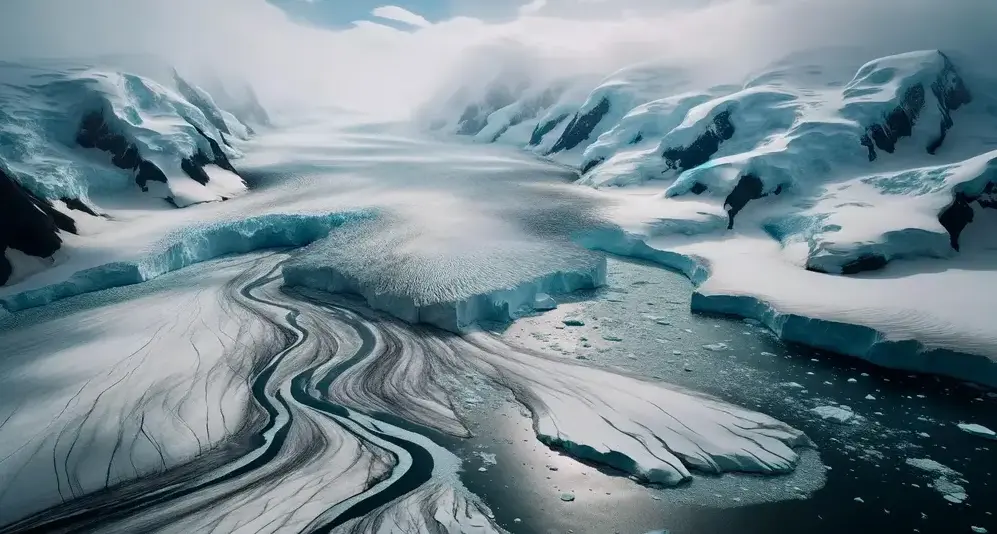Scientists discover a threatening crisis in East Antarctica
- February 17, 2024
- 0
Meltwater rising from Antarctica is expected to play a significant role in sea level rise due to climate change. But the bulk of scientific research has focused on
Meltwater rising from Antarctica is expected to play a significant role in sea level rise due to climate change. But the bulk of scientific research has focused on

Meltwater rising from Antarctica is expected to play a significant role in sea level rise due to climate change. But the bulk of scientific research has focused on West Antarctica, particularly areas such as the Thwaites Glacier, which has experienced significant melting in recent years.
In a recently published article Geophysical Research Letters Stanford researchers have shown that the subglacial Wilkes Basin in East Antarctica, which contains enough ice to raise global sea levels by more than 10 feet, may be closer to melting than anyone thought.
“There hasn’t been a lot of analysis in this area — there’s a huge amount of ice there, but it’s relatively stable,” said Elisa Dawson, a geophysics graduate student at Stanford University and first author of the paper. “For the first time, we observe the temperature at the base of the ice sheet and how close it is to potential melting.”
The Wilkes Subglacial Basin is about the size of California and flows into the Southern Ocean along a relatively small coastline. Dawson and his colleagues found evidence that the base of the ice sheet is close to melting. This raises the possibility that this coastal region that retains ice along the Wilkes subglacial basin may be sensitive to even small changes in temperature.
Previous studies have shown that because the land in the area is below sea level and slopes downward from the ocean, the subglacial Wilkes Basin may be particularly vulnerable to irreversible melting if warm seawater penetrates beneath the ice sheet. Dawson and his colleagues were the first to examine how current temperatures at the base of the region’s ice sheet might increase this vulnerability.
The researchers collected data from existing radar surveys conducted by planes flying over the glacier. The planes record reflections of electromagnetic signals passing through the ice sheet and reflecting off the ground below. Dawson and his colleagues developed a new technique to analyze this data; They converted images of sections of ice and bedrock into information about temperature conditions at the base of the ice sheet.
“The temperature of the ice affects how much the radar reflects in different ways, so a single measurement is imprecise,” said Dustin Schroeder, associate professor of geophysics and electrical engineering. “This statistical approach essentially involved selecting regions that could be considered frozen or thawed and comparing other radar signatures with them. This allowed us to tell whether other regions of the ice sheet were definitely frozen, definitely thawed, or difficult to name.”
Researchers found large areas of frozen and thawed soil scattered throughout the region, but much of the area could not be definitively classified either way. In some cases this may be due to changes in the geometry of the ice sheet or other complications in the data, but it can also mean that large areas of land beneath the ice sheet are either close to melting or consist of tightly mixed frozen and thawed areas. If the latter is true, glaciers in the Wilkes subglacial basin could reach a tipping point with only a small increase in temperature at the base of the ice sheet.
“This suggests that glacier retreat may be possible in the future,” said Dawson. “This part of East Antarctica is largely ignored, but we need to understand how it might evolve and become more unstable. What needs to happen to start seeing mass loss?”
Different models predicted very different futures for the subglacial Wilkes Basin and its effects on sea level rise because there was not enough data about the region. The researchers plan to integrate radar temperature observations into an ice sheet model to improve predictions of how the region would perform under different climate scenarios.
They hope their study will highlight the importance of studying this region and other parts of East Antarctica that appear stable but may play an important role in our future.
“There are conditions in this region that we can imagine will change,” Schroeder said. “And if warm ocean water gets there, it will ‘engage’ a whole region of Antarctica that we don’t normally think of as the cause of sea level rise.”
Source: Port Altele
As an experienced journalist and author, Mary has been reporting on the latest news and trends for over 5 years. With a passion for uncovering the stories behind the headlines, Mary has earned a reputation as a trusted voice in the world of journalism. Her writing style is insightful, engaging and thought-provoking, as she takes a deep dive into the most pressing issues of our time.